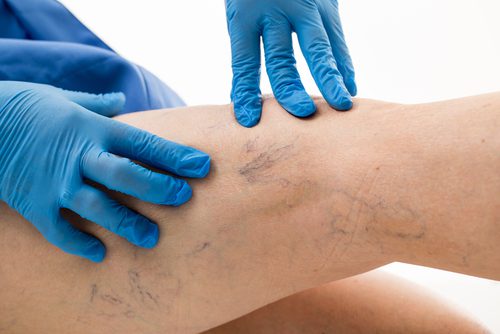For many adults across Long Island, heavy, swollen legs can signal something more serious. When leg veins stop working the way they should, blood pools in the lower limbs, and pressure builds over time. This condition, called chronic venous insufficiency, can quietly disrupt daily life unless it’s caught and treated early.
What Is Chronic Venous Insufficiency?
Chronic venous insufficiency (CVI) is a long-term condition where the valves in the leg veins don’t close properly. These valves are supposed to help blood flow upward toward the heart. When they fail, gravity takes over, and blood begins to collect in the legs instead of circulating normally. Swelling, pressure, inflammation, and eventually visible changes in the skin can arise.
Some patients develop CVI after deep vein thrombosis (DVT), a blood clot in the deeper veins that damages valves. Others may be dealing with weakened vein walls, hereditary vein disorders, or long-standing weight and lifestyle issues that strain circulation.
According to the CDC, up to 50% of people who’ve had a DVT may develop post-thrombotic complications such as chronic venous insufficiency. That makes early diagnosis and vein-focused care essential, especially for adults with a history of clots, long hours on their feet, or visible vein issues.
Common Symptoms
Symptoms of chronic venous insufficiency often start small and gradually get worse. What begins as tired or heavy legs can turn into more obvious and uncomfortable issues, including:
- Swelling in the ankles or lower legs
- Aching, burning, or throbbing sensations
- Itchy, dry, or leathery skin
- Large, bulging varicose veins
- Darkened skin around the ankles
- Open sores or ulcers that heal slowly
What Causes Chronic Venous Insufficiency?
Faulty valves are the direct cause of chronic venous insufficiency, but several risk factors increase the likelihood that those valves will fail. These include:
- A history of deep vein thrombosis
- Family history of vein disease
- Older age
- Pregnancy
- Obesity
- Jobs that involve long periods of standing
Diagnosis
A clinical examination is usually the initial step. After the clinical examination, a provider may order a duplex ultrasound to evaluate blood flow and assess for failed valves or blockages. This non-invasive scan can identify the area of reversible reflux and influence a treatment plan.
Typically, physicians will also utilize the CEAP classification system to stage disease severity or changes over time.
Treatment
The good news is that chronic venous insufficiency is treatable and often without surgery. Compression stockings are a common starting point, helping reduce swelling and improve circulation. However, for people with advanced symptoms or visible varicose veins, in-office procedures may offer faster, longer-lasting relief.
Minimally invasive treatments like endovenous laser ablation and radiofrequency ablation use heat to close off the damaged veins from the inside. These methods are safe, outpatient-based, and typically require little downtime. Patients often return to daily activities within a day or two.
For those with larger or more stubborn veins, micro-incisional vein stripping, also called ambulatory phlebectomy, may be used. This modern version of vein stripping is very different from the traditional procedure that many still fear. It’s done through tiny skin punctures under local anesthesia and leaves no major scars. It’s still a viable option, just used in a much gentler, more precise way today.
When to Get Help
Living with leg pain, swelling, or skin changes doesn’t have to be your “normal.” If you think you may be dealing with chronic venous insufficiency, we’re here to help.
At North Shore Vein Center, we evaluate each patient with an ultrasound and create a personalized treatment plan using proven techniques like ablation, sclerotherapy, or microphlebectomy. If you live in Long Island and want answers about your leg veins, contact us to schedule a consultation.

